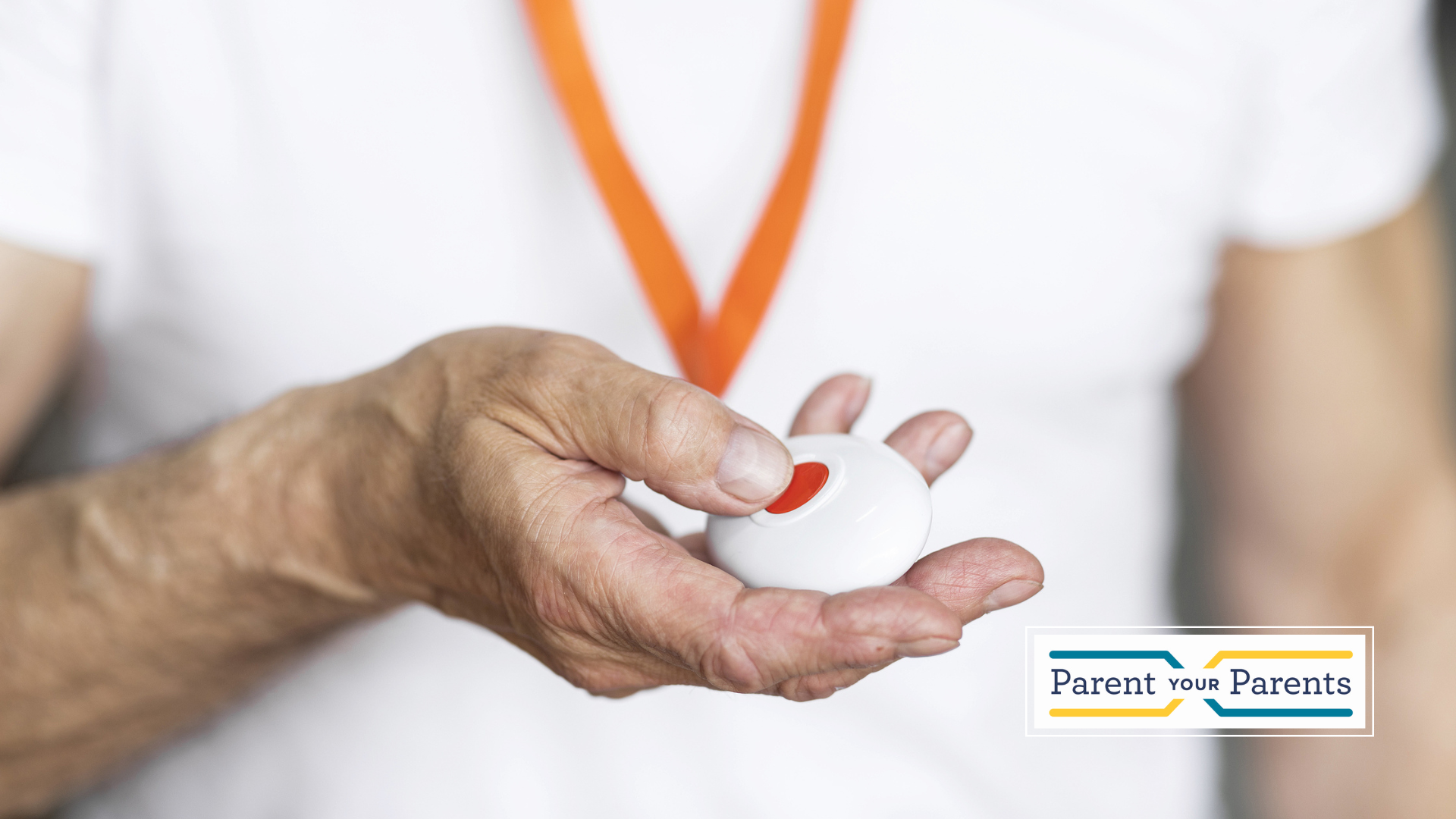
Did you know medical alert systems play a crucial role in providing emergency assistance and saving lives, especially for our aging parents who may face increased risks of health-related emergencies, including falls? These life-saving technologies typically involve tools such as a:
- wearable pendant,
- lanyard,
- bracelet, or
- phone app
and include an emergency call button.
But how does it work to protect our aging parents who choose to wear it? When activated during a health crisis, the device sends a signal for immediate medical assistance. Depending on the system, it can automatically contact 911 or connect the user with a live agent from a care control center through a two-way intercom, ensuring a swift and appropriate response.
Is there anything more that can be included? In most circumstances, the answer is “yes.” To further bolster the effectiveness of medical alert systems, let us share a few essential add-on features to further protect your aging parents:
- Voice extenders. Home-based alert systems, which are different from mobile systems, require the wearable alert device to connect to a central plug-in unit that operates like a speaker phone. When the call button is pressed, a medical dispatching agent communicates with the senior through the unit. Voice extenders enhance communication by enabling both the senior and responder to hear each other clearly from anywhere in the senior’s home.
- Wall buttons. Wall buttons serve as supplementary alert devices placed strategically in potentially hazardous areas, such as bathrooms, kitchens, and at the bottom of stairs. Similar to fire alarms, pressing a wall button triggers contact with an emergency dispatcher through the home unit.
- Voice-activated wall buttons. An innovative variation of wall-mounted alert buttons, voice-activated wall buttons enable injured seniors to call for help by repeating an emergency password or phrase twice in rapid succession. Additionally, they come equipped with long, vertical pull cords that automatically connect to an emergency monitoring agent when pulled.
- Lockbox. This simple yet invaluable no-tech feature does not necessarily have to be purchased from a medical alert company. The lockbox contains a key to the senior’s front door, secured with a combination lock, and is clearly visible to emergency responders. This aids responders in gaining swift access to the senior’s home during a health crisis. The lockbox combination, along with detailed health information, can be securely retained and communicated to emergency responders by the medical alert company.
By considering these essential add-ons for medical alert systems, your aging parents can significantly enhance their safety and ensure timely access to critical medical assistance when needed. These features provide an additional layer of support, peace of mind, and rapid response during emergencies.
We know this article raises more questions than it answers and we want to help you. We provide expert service to guide you through the medical, financial, and emotional stress of caring for an aging parent or spouse. Our law firm was born out of the personal journey of Attorney H. Frances Reaves as she cared for her own parents. This experience taught her that most seniors in the United States are ignored by society, the government, business and, sadly, their children. Most children of elderly parents don’t know how many benefits and resources are available for their parents or ailing family members. Let us help you. We encourage you to contact us and schedule a meeting.

